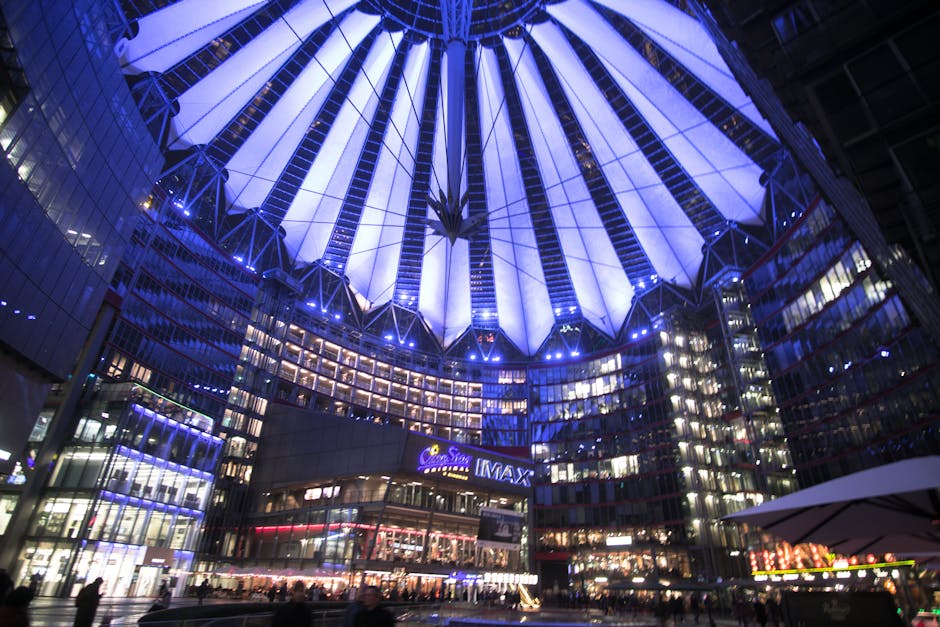The Importance of Stainless Steel Fabrication in Modern Engineering Projects
Stainless steel fabrication has become an integral component of modern engineering projects, offering a myriad of benefits that address the evolving needs of the industry. Its exceptional corrosion resistance and longevity make it an ideal choice for structures and components subjected to harsh environmental conditions.
Furthermore, the design flexibility and customisation options provided by stainless steel enable engineers to create tailored solutions for specific applications. As a sustainable and eco-friendly material, stainless steel fabrication alines with the growing emphasis on environmental responsibility in engineering.
Its inherent strength and durability cater to the demanding requirements of various engineering projects. Moreover, the aesthetic appeal and modern applications of stainless steel further underscore its significance in contemporary engineering endeavours.
Key Takeaways
- Stainless steel fabrication ensures exceptional corrosion resistance and longevity in engineering projects.
- Stainless steel fabrication offers design flexibility and customisation for meeting specific application requirements.
- Stainless steel is a sustainable and eco-friendly material in engineering projects.
- Stainless steel exhibits exceptional strength and durability in engineering applications.
Corrosion Resistance and Longevity

Stainless steel fabrication ensures exceptional corrosion resistance and longevity in engineering projects, providing a reliable and durable solution for various applications. These properties can be attributed to the material’s chemical composition, primarily consisting of iron, chromium, nickel, and other alloying elements.
Chromium, in particular, forms a thin, passive oxide layer on the steel’s surface when exposed to oxygen, providing resistance to corrosion and staining. Furthermore, the addition of nickel enhances the material’s corrosion resistance in more aggressive environments, such as those containing acids.
In addition to its inherent material properties, stainless steel fabrication also allows for a variety of surface finishing and passivation techniques. These processes further enhance the material’s resistance to corrosion by promoting the formation of the protective oxide layer. Surface finishes like grinding, brushing, and electropolishing not only improve the aesthetic appeal but also contribute to the material’s corrosion resistance.
With its superior material properties and surface finishing techniques, stainless steel fabrication stands as a highly reliable and durable solution for engineering projects where corrosion resistance and longevity are paramount. Transitioning into the subsequent section, the design flexibility and customisation options further underscore the versatility of stainless steel in meeting diverse engineering needs.
Design Flexibility and Customisation

When considering modern engineering projects, the design flexibility and customisation offered by stainless steel fabrication are crucial factors in meeting specific and varied application requirements. Stainless steel fabrication provides the ability to create customised solutions that meet the unique needs of each project. This is achieved through the use of advanced manufacturing techniques that allow for intricate and precise shaping of stainless steel components.
The design flexibility of stainless steel fabrication enables engineers to create complex and innovative designs that may not be achievable with other materials. Additionally, stainless steel can be easily tailored to fit into various architectural and structural designs, allowing for seamless integration into a wide range of applications.
Furthermore, the customisation options offered by stainless steel fabrication ensure that the final products meet the exact specifications and performance requirements of the project, providing engineers with the confidence that their designs will perform optimally.
Sustainable and Eco-Friendly Material

An increasingly important aspect of stainless steel fabrication in modern engineering projects is its role as a sustainable and eco-friendly material. Stainless steel’s sustainability stems from its ability to be recycled and reused, reducing the need for new resources and minimising environmental impact. Its durability and resistance to corrosion also contribute to sustainable practises by extending the lifespan of products and structures, reducing the frequency of replacements. Additionally, stainless steel fabrication processes have evolved to incorporate eco-friendly practises, such as minimising waste and energy consumption. These factors make stainless steel an attractive choice for environmentally conscious engineering projects.
| Sustainable Practises | Environmental Impact |
|---|---|
| Recyclability | Reduced Resource Consumption |
| Durability | Corrosion Resistance |
| Eco-Friendly Processes | Waste Minimisation |
The use of stainless steel alines with the growing emphasis on sustainable practises and the need to minimise the environmental impact of engineering projects. Transitioning from traditional materials to stainless steel contributes to a more environmentally friendly approach in modern engineering. This focus on sustainability sets the stage for discussing stainless steel’s strength and durability in engineering.
Strength and Durability in Engineering

A key determinant in evaluating the suitability of stainless steel for modern engineering projects is its exceptional strength and durability. Stainless steel’s remarkable strength and durability make it an ideal material for a wide range of engineering applications.
The following factors highlight the significance of stainless steel in terms of strength and durability in modern engineering:
-
High Tensile Strength: Stainless steel exhibits high tensile strength, making it resistant to deformation under tension, a crucial property in structural engineering applications.
-
Corrosion Resistance: The material’s inherent resistance to corrosion ensures longevity and reliability in diverse environmental conditions, reducing maintenance and replacement costs.
-
Temperature Resistance: Stainless steel retains its mechanical properties across a wide range of temperatures, making it suitable for applications in extreme heat or cold.
-
Innovative Alloys: Ongoing innovation in stainless steel alloys continues to enhance its strength and durability, expanding its potential for use in cutting-edge engineering projects.
The combination of these attributes positions stainless steel as a cornerstone material in engineering, capable of meeting the demanding requirements of modern construction and infrastructure projects.
Aesthetic Appeal and Modern Applications

Stainless steel’s aesthetic appeal and modern applications play a pivotal role in shaping the visual and functional aspects of contemporary engineering projects. Its clean, sleek appearance and versatility make it a popular choice for architectural integration and a wide range of modern applications. The following table illustrates the diverse applications and aesthetic appeal of stainless steel in modern engineering projects:
| Application | Aesthetic Appeal | Architectural Integration |
|---|---|---|
| Structural elements | Modern and sleek look | Blending with modern designs and materials |
| Cladding and facades | Reflective surfaces | Adding contemporary style to buildings |
| Interior design | Clean and minimalist | Enhancing modern interior spaces |
| Sculptures and art | Contemporary and artistic | Adding a modern touch to public spaces |
| Signage and branding | Professional and durable | Incorporating modern branding into architecture |
Stainless steel’s aesthetic appeal and modern applications go hand in hand, making it an indispensable material for achieving both visual allure and functional excellence in modern engineering projects.
Frequently Asked Questions
What Are the Most Common Types of Stainless Steel Used in Fabrication for Modern Engineering Projects?
The most common types of stainless steel used in fabrication for modern engineering projects include austenitic, ferritic, and martensitic. Each type has distinct properties, offering a balance of strength, corrosion resistance, and cost-effectiveness, with varying maintenance requirements.
Can Stainless Steel Fabrication Be Used in Conjunction With Other Materials, Such as Glass or Wood, for a More Unique Design?
Stainless steel fabrication can indeed be utilised in conjunction with other materials like glass or wood to create unique designs. By combining the strength and durability of stainless steel with the elegance of glass or the warmth of wood, innovative and visually striking engineering projects can be achieved.
How Does Stainless Steel Fabrication Contribute to Reducing Environmental Impact and Promoting Sustainability in Engineering Projects?
Stainless steel fabrication contributes to sustainability in engineering projects by reducing waste through efficient material usage, promoting sustainable practises such as recycling, and offering long-term durability, thus minimising the need for frequent replacements and resource consumption.
Are There Any Specific Standards or Certifications That Ensure the Strength and Durability of Stainless Steel Fabrication in Engineering Applications?
Certification standards like ASME, ASTM, and ISO ensure the strength and durability of stainless steel fabrication in engineering applications. Quality control measures, material compatibility assessments, and adherence to industry-specific standards provide assurance of durability.
What Are Some Innovative and Cutting-Edge Modern Applications of Stainless Steel Fabrication in Engineering Projects?
Innovative applications of stainless steel fabrication in modern engineering projects encompass advanced structural designs, precision components for aerospace and medical equipment, and sustainable architectural features. Cutting-edge techniques in welding and forming contribute to these advancements.
Conclusion
In conclusion, stainless steel fabrication plays a vital role in modern engineering projects due to its corrosion resistance, design flexibility, sustainability, strength, and aesthetic appeal.
Its enduring properties symbolise the resilience and longevity of structures in the face of environmental challenges.
As a sustainable and eco-friendly material, stainless steel fabrication embodies the principles of modern engineering, making it an indispensable choice for a wide range of applications in the industry.
Contact us to discuss our services now!
